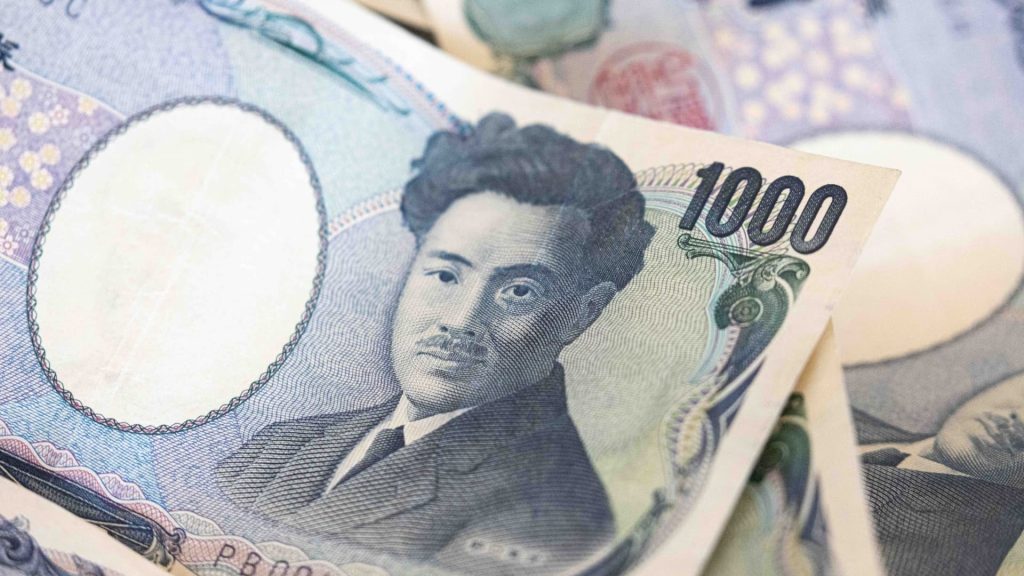The Japanese yen weakened to 160 against the U.S. dollar in Monday morning trading in Asia.
The yen briefly touched 160.03 against the dollar, the weakest level since April 1990 when it touched 160.15, according to FactSet data. The currency strengthened by midday to trade around 156.5 against the dollar.
The Commonwealth Bank of Australia said Japan’s Ministry of Finance is expected to publish Tuesday its market intervention statistics for March 28 to April 26. It said, however, “We have not seen any media reports that confirm intervention.”
“Today’s JPY volatility may reflect the skittishness of markets amid thin liquidity. We will unlikely receive comments from Japanese officials today because Japan is on holiday,” the bank said.
Japanese authorities have repeatedly warned against “excessive” moves in the yen, but have made no official announcements about bolstering the currency. Some market watchers had suspected authorities would intervene at the 155 level, but the yen slid past that mark last week.
Three-month performance of the Japanese yen against the U.S. dollar
The currency has languished alongside continued strength in the greenback as Federal Reserve rate cut expectations get pushed back. The Fed’s preferred inflation gauge came in slightly hotter than expected on Friday, underlining the difficulty the U.S. central bank faces in tackling sticky inflation.
The yen has traded around 150 or weaker against the dollar since the Bank of Japan ended its negative interest rate regime in March. On Friday, the central bank held rates and slightly raised its inflation expectations for fiscal 2024.
Yen intervention?
Vincent Chung, associate portfolio manager for T. Rowe Price’s diversified income bond strategy, noted that officials seem more focused on volatility in the currency, rather than specific levels.
“The current pace of depreciation is less than in 2022 so the intervention response could be less intense,” Chung said, noting option pricing suggests markets predict intervention could come after the BOJ’s May meeting.
Other experts have made similar remarks, telling CNBC there is no magical “line in the sand” for yen intervention. Last week, Frederic Neumann, HSBC’s chief Asia economist and co-head of global research in Asia, said the more important thing is to monitor how the yen weakens.
If the yen sees a “steady depreciation,” the economist said there might not be much resistance from Japanese authorities.
In a press conference Friday, BOJ Governor Kazuo Ueda said exchange rate volatility would only affect monetary policy if there was a “significant” impact on the economy, according to a Reuters translation of his remarks.
“If yen moves have an effect on the economy and prices that is hard to ignore, it could be a reason to adjust policy,” Ueda said, according to a Reuters translation.
Jesper Koll, expert director at investment advisory firm Monex Group, predicted Japanese officials would take action if the yen moves more than 3-5 yen in 12 hours, namely, when it sustains a genuine speculative attack.
Speaking shortly after the yen hit 160 on Monday, Koll said any intervention “will be a waste of Japan’s national assets” as the country sells its U.S. dollars to buy yen. Koll said the yen could further weaken to 200-220 against the greenback, if nothing fundamentally changes.
For speculators, Koll said intervention is “free liquidity” and will remain as such unless the Fed signals that rate cuts are back on the table, thereby weakening the U.S. dollar, or if Ueda signals that domestic demand-pull inflation must be contained.
Still, T. Rowe Price’s Chung said yen weakness has “positively impacted stock performance, encouraged corporations to raise wages, and moved the country closer to the Bank of Japan (BoJ)’s inflation target of 2%.”
Japanese markets are closed Monday for a public holiday.
Read the full article here
